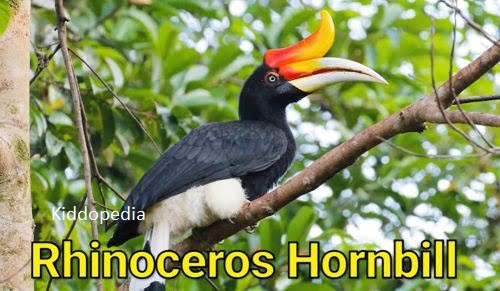Discover the Fascinating World of Birds with the Longest Beaks. Birds exhibit a diverse range of beak sizes and shapes that are tailored for different purposes such as feeding and defence. However, some birds have developed extremely elongated and distinct beaks that set them apart from their counterparts. In this exploration, we’ll delve into various bird species with long beaks and uncover the remarkable characteristics of their beaks. You’ll discover the names of birds with the longest beaks and get a glimpse of them in their natural habitats, highlighting how their extended beaks aid in their survival and flourishing.
Birds With The Longest Beaks: Names And Sounds
Birds With The Longest Beaks
Pelicans

Pelicans are large water birds known for their distinctive long beaks with a large throat pouch used for catching and carrying fish. They have webbed feet, short legs, and a broad wingspan, making them adept at soaring and gliding over water. Pelicans are found worldwide, with most species preferring to live in coastal areas, although some can also be found in inland lakes and rivers. They are social birds and are often seen in flocks, diving and scooping up fish in synchronized movements. Pelicans are not only fascinating to watch but are also important to the ecosystem as they help control fish populations and provide a food source for other predators. Read more about the Pelicans
Read Popular Bird Names And Sounds For Kids Learning
Toucans

Toucans are colourful birds native to Central and South America, known for their distinctively large and colourful bills. Their bills are made of a lightweight material called keratin, and despite their size, they are surprisingly light. Toucans use their bills for a variety of tasks, including reaching fruit on branches, catching insects, and defending themselves from predators. They are also skilled climbers, using their strong toes and sharp claws to move around in the trees. Toucans are social birds and are often found in pairs or small groups. They are popular among bird watchers and are admired for their striking appearance and playful behaviour. Read more about Toucan
Goliath Heron

The Goliath heron is a large wading bird found in sub-Saharan Africa. It is the tallest heron species in the world, standing up to 5 feet tall with a wingspan of up to 7 feet. The Goliath heron is characterized by its grey-blue plumage, long neck, and thick, powerful bill. They are typically found near rivers, lakes, and swamps, and feed mainly on fish, amphibians, and insects. Goliath herons are solitary birds and can be difficult to spot in the wild due to their secretive behaviour. Read more about Goliath Heron
Read The World Of Interesting Insects: Fascinating Guide For Kids
Curlews

Curlews are a group of wading birds found throughout the world, with different species inhabiting various regions. They are known for their long, downward-curved bills, which are used to probe the ground and mud for invertebrates such as worms, crabs, and small shellfish. Curlews have a distinctive call, which is often described as a haunting and melodious whistle. They are typically found in coastal wetlands, estuaries, and marshes, but some species also inhabit grasslands and forests. Curlews are migratory birds, and some species undertake long-distance flights of up to 9,000 miles. Read more about Curlew
Storks

Storks are large wading birds found across the world, typically near wetlands, marshes, and other water bodies. They are known for their long legs and long, pointed beaks, which they use to catch and eat fish, frogs, snakes, and other small prey. Many species of storks are migratory, travelling long distances each year to breed and feed. Storks are also known for their distinctive nests, which are often made of sticks and can be found in trees or on structures such as poles and chimneys. Read more about Stork
Read A Guide To Scary And Spooky Animals For Kids Learning
Pied Avocets

Pied avocets are striking wading birds found across Europe and parts of Asia and Africa. They are recognized for their distinctive black and white plumage, with a long, slender upturned bill used to sweep back and forth in shallow water, catching small invertebrates such as crustaceans and insects. Pied avocets are known for their elegant and graceful movements, and they are often seen in large flocks during the breeding season, where they build nests on the ground near water bodies. These birds are known for their special adaptation to saline habitats, where they have a unique way of drinking water. They tilt their head to the side to scoop up water with their bill and then filter out salt through specialized glands in their bills. Read more about Pied Avocets
Eurasian Curlew

The Eurasian Curlew is a large wading bird found in Europe, Asia, and parts of Africa. It has a distinctive long, curved bill that is around 10-20 cm long and is brownish-grey in colour, with streaks on its back and head. The Eurasian Curlew is known for its haunting, flute-like call that carries over long distances. It typically feeds on insects, worms, and other invertebrates found in wetlands and coastal areas. Read more about Eurasian Curlew
Read Animal Group Names For Kids Learning
Hoopoe

The Hoopoe (Upupa epops) is a medium-sized bird found across Europe, Asia, and parts of Africa. It is easily recognizable by its distinctive crown of feathers, which it can raise and lower like a fan, as well as its long, curved bill. The Hoopoe has a pinkish-brown body with black and white stripes on its wings and tail. It feeds mainly on insects, which it catches by probing its bill into the ground. The Hoopoe is known for its melodious and pleasant calls, which are often heard during the breeding season. Read more about Hoopoe.
Rhinoceros Hornbill

The Rhinoceros Hornbill (Buceros rhinoceros) is a large bird that inhabits the rainforests of Southeast Asia. It is known for its distinctive appearance, with a large, curved beak that is shaped like a rhinoceros horn, and a colourful casque on its head. The Rhinoceros Hornbill has black plumage with white tail feathers, and its casque is red in colour. The species is an omnivore, feeding on a variety of fruits, insects, small mammals, and reptiles. It is also known for its unique breeding behaviour, in which the female seals herself inside a tree cavity during incubation, leaving only a small opening for the male to feed her and their young. Read more about Rhinoceros Hornbill
Read Big Cats And Their Habits: A Guide For Kids Learning
Common Snipe

The Common Snipe (Gallinago gallinago) is a medium-sized wading bird found in wetlands and marshes throughout Europe, Asia, and North America. It is known for its distinctive long bill, which is used to probe the mud for invertebrates and other prey. The Common Snipe has brown and black mottled plumage, with a white belly and a striped head. It is a migratory bird, with populations in the northern hemisphere typically migrating southwards for the winter. The Common Snipe is also known for its distinctive “drumming” sound, produced by its rapidly beating wings during a courtship display. Read more about Common Snipe
Black Skimmer

The Black Skimmer (Rynchops niger) is a unique seabird found along the coasts of the Americas, from the United States to South America. It is known for its distinctive beak, which is longer than its head and lower mandible and is used to “skim” the surface of the water in search of small fish. The Black Skimmer has black plumage on its back and wings, with white underparts and a red bill with a black tip. The species is highly social, often nesting in large colonies on sandy beaches or barrier islands. Read more about Black Skimmer
Read Animal Parenting: The Amazing World of Animal Parents
Shoebill

The Shoebill (Balaeniceps rex) is a large bird that inhabits the wetlands of eastern Africa, particularly in Uganda, Sudan, and Zambia. It is known for its distinctive appearance, with a massive, shoe-shaped bill that can reach up to 24 cm in length. The Shoebill has a bluish-grey plumage and is about 1.2 meters tall with a wingspan of up to 2.5 meters. The species feeds mainly on fish, which it catches by standing still for long periods and then lunging forward with its bill. The Shoebill is a solitary bird that prefers to live in quiet and secluded swamps and marshes. Read more about Shoebill
Kiwi

The Kiwi is a flightless bird native to New Zealand, and it is well known for its distinctive appearance and behaviour. Kiwis have small, vestigial wings that are hidden under their feathers, and their body is covered in hair-like feathers that give them a fuzzy, soft appearance. They have a long, thin beak that they use to probe the ground for insects and other small invertebrates. Kiwis are also notable for their nocturnal habits and their ability to smell and locate prey with their long, sensitive beaks. The kiwi is an important cultural symbol in New Zealand and is featured on the country’s coat of arms. Read more about Kiwi
Read Vertebrate Animals For Kids Learning
Aracari

Aracari is a small to medium-sized bird belonging to the toucan family and found in the tropical rainforests of Central and South America. They are closely related to toucans and have a similar bill structure, with a large, curved bill that is used to extract fruits, insects, and small animals from trees. Aracari have brightly coloured plumage, with a combination of green, yellow, red, and blue feathers, and are notable for their distinctive eye markings. They are highly social birds and can often be found in groups of up to a dozen individuals. Read more about Aracari
Eurasian Spoonbill

The Eurasian Spoonbill (Platalea leucorodia) is a large wading bird found in wetlands throughout Europe and Asia. It is known for its distinctive, spoon-shaped bill, which it uses to sift through the mud in search of small aquatic invertebrates and fish. The Eurasian Spoonbill has white plumage, with black feathers on its wings and tail and a yellow patch on its breast during the breeding season. It is a migratory bird, with populations in the northern hemisphere typically migrating southwards for the winter. Read more about Eurasian Spoonbill
Roseate Spoonbill

The Roseate Spoonbill (Platalea ajaja) is a beautiful wading bird found in the wetlands of the Americas, from the southeastern United States to South America. It is known for its distinctive, spoon-shaped bill, which it uses to catch small aquatic prey, such as fish, crustaceans, and insects. The Roseate Spoonbill has a striking pink and white plumage, with a bright pink body, white neck, and a featherless head with a pale green patch. The species is highly social and often nests in large colonies on trees or in wetlands. Read more about Roseate Spoonbill.
Final Thoughts
In conclusion, we have learned about some amazing birds with the longest beaks in the world, including the Toucan, and Pelican. Not only are these birds fascinating to look at, but they also make some unique and interesting sounds. By studying these incredible creatures, we can appreciate the diversity of the natural world and learn more about the importance of protecting and preserving our planet’s wildlife. So next time you hear the call or the chattering of a bird, remember how truly amazing these birds are!
Did you like the article about the Fascinating World of Birds with the Longest Beaks and their sounds?
Thank you for your visit.
Don’t forget to share it.
PVM

Mathukutty P. V. is the founder of Simply Life Tips. He is a Blogger, Content Writer, Influencer, and YouTuber. He is passionate about learning new skills. He is the Director of PokketCFO.
He lives with the notion of “SIMPLE LIVING, CREATIVE THINKING”. He Believes – “Sharing is caring.” and “Learning never ends.”



